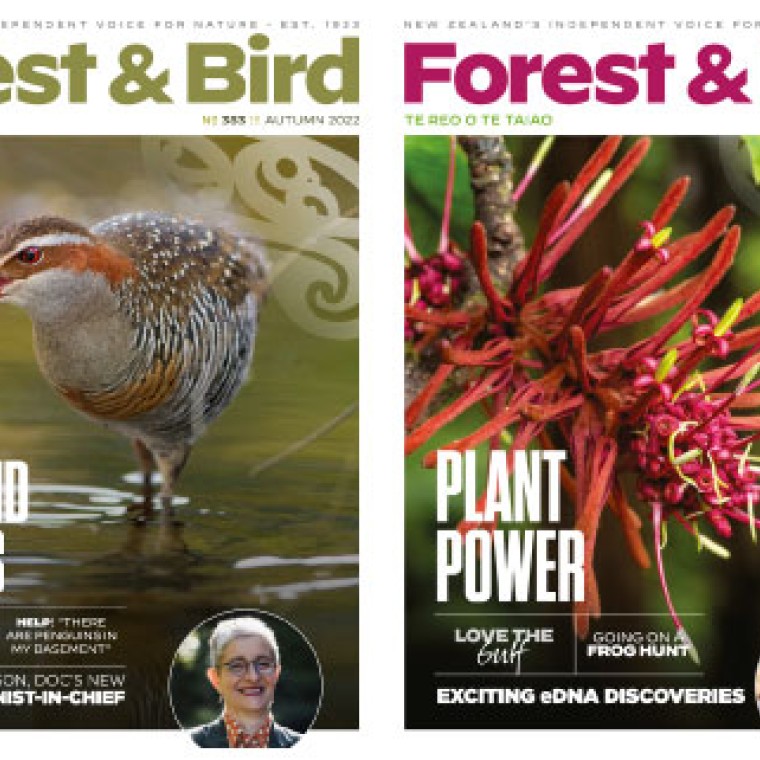While more protection is needed, Forest & Bird is celebrating the passing of the Hauraki Gulf / Tīkapa Moana Marine Protection Bill as a hard-won milestone. This Bill has been a decades-long campaign to restore one of Aotearoa New Zealand’s most treasured marine ecosystems.
The Bill introduces 19 new protected areas, increasing high protection areas from 0.3% to 6% of the Gulf. This is a step in the right direction for nature and the communities who have fought for the health of Tīkapa Moana the Hauraki Gulf.
However, Forest & Bird is deeply concerned about significant compromises in the Bill’s final form:
- Commercial fishing has been allowed in two high protection areas – a decision made after public consultation closed, despite thousands signing a petition opposing it.
- The intent of ‘high protection’ was overridden at the last minute, prioritising industry interests over ecosystem recovery.
- Whānau and hapū voices have been removed from decision-making, stripping away rights and agency at the very level where kaitiakitanga is actively practiced.
“Tīkapa Moana is a taonga and is woven into the identity of Aotearoa,” says Bianca Ranson, Forest & Bird’s National Conservation Advocate.
“It’s the nursery for our fish, the feeding ground for whales and seabirds, and part of our national identity. If we fail the Gulf, we fail future generations.
“Te Moananui-ā-Toi is resilient, but it’s crying out for our help. The communities of the Gulf have shown what we can achieve. Now it’s time for the Government to match that courage and commit to the bold action this unique ecosystem needs to thrive again.
“This legislation is such an important step forward for the Gulf and marine protection in Aotearoa, but allowing commercial fishing in high protection areas undermines their purpose.
“It turns high protection into a managed fisheries zone. This puts short-term commercial interests ahead of ecosystem recovery and long-term sustainable fisheries.
“It also sets a dangerous precedent for future protected areas. That’s not what the Gulf needs, and it’s not what people asked for.”
Successive State of the Gulf reports have warned of the accelerating loss of wildlife and habitat across the marine park. Once abundant species like tipa scallops, kūtai green-lipped mussels, and kōura rock lobsters, have been fished to functional extinction. Seabird populations are struggling, and kelp forests are vanishing under pressure from warming seas and kina overpopulation.
Forest & Bird remains committed to fighting for the Gulf’s future and will continue to push for a review of the Bill within three years; alignment with international marine protection standards; and restoration of whānau and hapū level decision-making and recognition of their role as kaitiaki.
“This Bill is the result of decades of tireless advocacy from mana whenua, environmental groups, scientists, and local communities who refused to stand by and watch the decline of the Gulf,” says Ms Ranson.
“Their persistence and passion made this happen and it’s time for us to acknowledge the countless volunteer hours, years of research, public submissions, and the shared vision of thousands of people who love this place and who continue to work hard for its protection.
“We cannot wait another decade for incremental change. Stronger protections are urgently needed – the health of the Gulf must come before short-term profit.”
Forest & Bird is calling for:
- At least 30% of the Gulf to be fully protected by 2030, in line with global biodiversity goals.
- An end to destructive fishing methods like bottom trawling, scallop dredging, and Danish seining.
- Stronger measures to address land-based pollution and sedimentation, which all stakeholders agree is a major threat to marine life and must be addressed in the RMA reforms.
